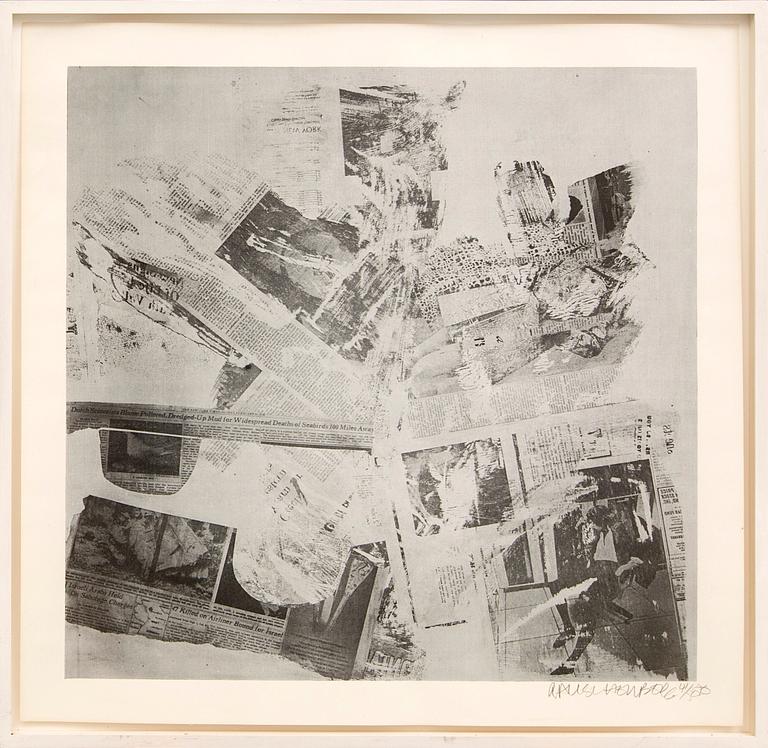Robert Rauschenberg
Robert Rauschenberg, silkscreen signed dated and numbered 41/50 70
100x100 cm
Not examined out of frame.
Provenance
Daytons gallery
More information
Rauschenberg's monumental graphic work "Currents" consists of 36 screen prints with motifs taken from eight contemporary American newspapers. Together with his assistant Bob Petersen, Rauschenberg cut headlines, articles and pictures from newspapers in January and February 1970. With these motifs, he printed two different portfolios "Surface Series from Currents" and "Features from Currents". He then combined the 36 motifs into one large work, which formed a giant scrapbook that reflected the crises of the 1960s and revolutionary events. The total dimensions of the sheet are 182.9 x 1645.9 cm, which was then the largest graphic sheet ever printed. It was produced in an edition of 6 copies. Due to its size, the work was often shown at an angle over a corner of the exhibition space, so that the serious headlines could surround the viewer - including at MoMa New York.
The catalog "Robert Rauschenberg" (2016) published for the large retrospective exhibition at the Tate Modern in London 2017 contains the following paragraph about "Currents":
"Rauschenberg's experience of endowing printing with painting's scale was fundamental to his conception of the edition screen-print 'Currents', a work he conceived in 1969 and published in 1970 at Styria Studio in Glendale, California. The work reproduces a series of thirty- six collages, Studies for 'Currents' (1970), each of which comprises headlines, texts, and photographs that Rauschenberg gathered from eight contemporary US newspapers over a period of two months. Of his decision to use multiple newspapers simultaneously he explained,' One reads a newspape, absorbs the information no matter how disorienting, distressing or inflammatory it might be. When reading five or six papers with the constant repetition of items, the devastating news has a serious impact and it cannot be ignored. ' The impact of the work's content was heightened through 'Currents' physical manifestation: it was printed on a single sheet of paper measuring six by fifty-four feet. Once again Rauschenberg had broken a record, making the largest-known printed work at the time . Because of its size, 'Currents' typically wraps around the corner of a room, enveloping the spectator in a collage of imagery about race relations, the Vietnam War, environmental challenges, and other political issues with which Rauschenberg was concerned, "
Quote page 364.





































